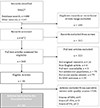Social Media Use and Deliberate Self-Harm Among Youth: A Systematized Narrative Review
- PMID: 32773916
- PMCID: PMC7413131
- DOI: 10.1016/j.childyouth.2020.105054
Social Media Use and Deliberate Self-Harm Among Youth: A Systematized Narrative Review
Abstract
Background: Suicide is now the 2nd leading cause of death among adolescents and young adults. Social media's influence on youth suicidal risk or attenuation of risk is a novel and rapidly expanding topic of research that requires attention from a broad range of mental health services professionals. We aimed to provide an updated review of social media-related risk and protective factors to youth deliberate-self harm (DSH) to guide mental health services professionals in offering care and support to youth vulnerable to suicide.
Methods: Studies on which primary research was conducted that evaluated young people's use of social media platforms related to DSH were systematically searched via Scopus and identified through expert recommendation and the Association for Computing Machinery's digital library of conference materials. The search focused on the timeframe June 2014 to September 2019, to offer an update since the time the most recent systematic reviews on this topic concluded their literatures searches. Quality was reviewed using the Mixed Methods Appraisal Tool (MMAT).
Results: A total of 38 articles were eligible, and 24 articles rated as high quality were included in a narrative review. Of the included articles, 19 explored DSH risk and 8 explored DSH protection. Most articles reported on cross-sectional quantitative or qualitative studies. Opportunities for both risks and benefits were explored, and potential influences of social media use were considered for subgroups of youth who may be especially vulnerable to suicide.
Conclusions: In the relatively short period of review, the association between social media use and youth DSH was tested in population-based studies, offering preliminary evidence for suicide prevention and treatment efforts. Further research is needed to understand the contribution of social media use to youth DSH, particularly among youth most vulnerable to suicidal risk.
Figures
References
-
- Hedegaard H, Curtin SC, Warner M. Suicide mortality in the United States, 1999–2017. NCHS Data Brief. 2018(330):1–8. - PubMed
-
- World Health Organization. Preventing suicide: A global imperative. Geneva, Switzerland: WHO Press; 2014.
-
- Adolescent health: Office of Disease Prevention and Health Promotion; [Available from: https://www.healthypeople.gov/2020/topics-objectives/topic/Adolescent-He...]. Accessed on April 29th, 2020
Grants and funding
LinkOut - more resources
Full Text Sources


